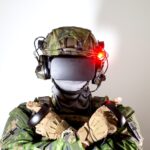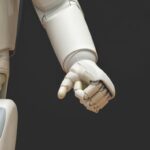Introduction
Imagine a world where computers can interpret and comprehend visual information from the physical world, just as humans do. With the advent of computer vision technology, this is not only possible but is also transforming industries worldwide. Computer vision, a subfield of artificial intelligence (AI), enables computers to identify, process, and interpret visual data in real time. This revolutionary technology has enormous potential and is already being harnessed in various sectors, from healthcare to retail, and beyond. As a small business owner, understanding the practical applications of computer vision can help you leverage this technology to enhance your operations, increase efficiency, and gain a competitive edge.
What is Computer Vision?
Computer vision is a branch of artificial intelligence that trains computers to interpret and understand the visual world. By using digital images from cameras and videos and deep learning models, machines can accurately identify and classify objects, and then react to what they “see.”
For instance, in the digital marketing realm, computer vision can be used to analyze consumer behaviors, preferences, and emotions, providing valuable insights that can be used to enhance marketing strategies and campaigns. This is just a tip of the iceberg; computer vision has far-reaching applications that can revolutionize how small businesses operate.
Applications of Computer Vision in Various Industries
Retail
In the retail sector, computer vision is used to enhance customer experiences and streamline operations. Amazon’s cashier-less store, Amazon Go, is a perfect example. By leveraging computer vision, the store tracks what customers pick from the shelves and automatically charges their Amazon account when they leave the store, eliminating the need for checkouts.
Healthcare
The healthcare sector is also benefiting from computer vision. For instance, computer vision algorithms can analyze medical images, such as CT scans or X-rays, to detect diseases. Google’s DeepMind Health project is using AI to help doctors detect over 50 eye diseases with 94% accuracy, a significant leap forward in early diagnosis and treatment.
Automotive
Computer vision is a key technology driving the development of autonomous vehicles. Cars equipped with computer vision technology can interpret traffic signals, detect obstacles, and safely navigate roads. Tesla’s Autopilot system, for example, uses computer vision to enable semi-autonomous driving.
Implications and Future Trends
The potential of computer vision goes beyond existing applications. The technology holds promise in numerous other areas, including agriculture, where it can be used to monitor crop health and detect pests. In manufacturing, it can aid in quality control by identifying defects in products. According to a report by MarketsandMarkets, the computer vision market is expected to reach USD 17.4 billion by 2024, growing at a CAGR of 7.7% from 2019.
One trend to watch is the integration of computer vision with other technologies, such as augmented reality (AR) and virtual reality (VR). This could lead to more immersive experiences in sectors like education, gaming, and real estate. Furthermore, as AI technology advances, the accuracy and efficiency of computer vision are likely to improve, leading to even more powerful applications.
Conclusion
Computer vision is a transformative technology with myriad practical applications that can revolutionize various sectors. For small business owners, understanding and leveraging this technology can help enhance customer experiences, increase operational efficiency, and gain a competitive advantage. As the technology continues to evolve, it’s worth keeping an eye on its future developments and trends to stay ahead of the game. The world is moving towards an era where computers not only ‘see’ but also ‘understand’ the visual world, opening up a world of endless possibilities.




